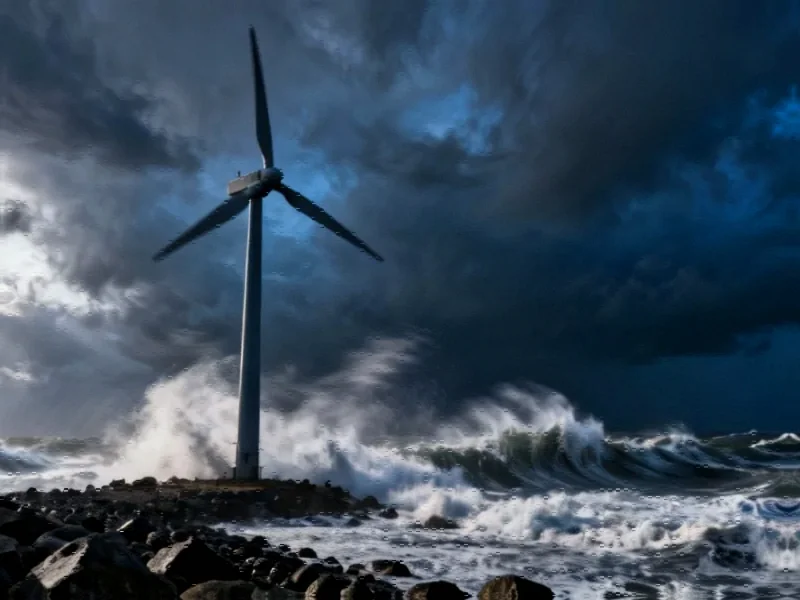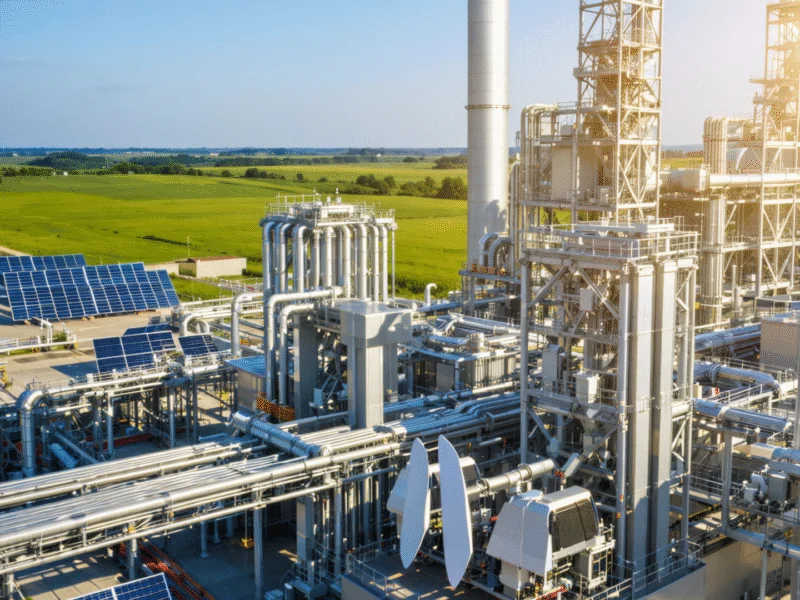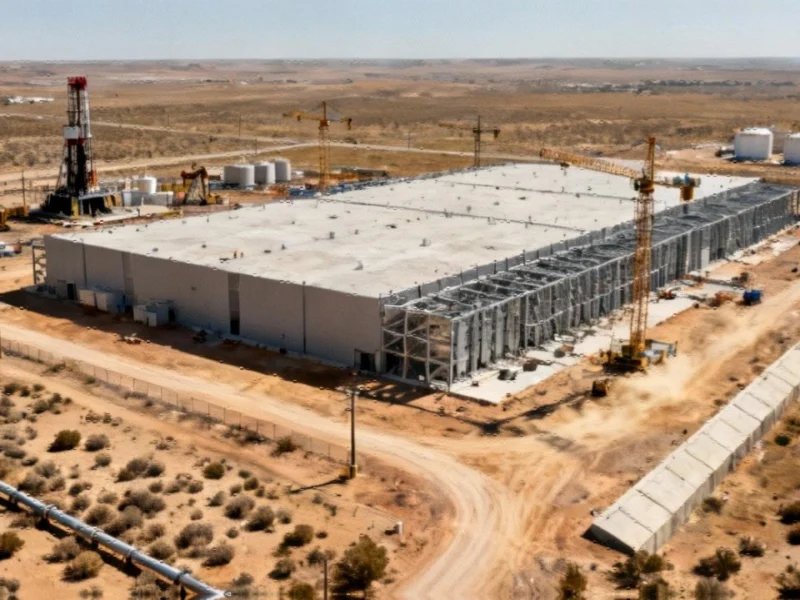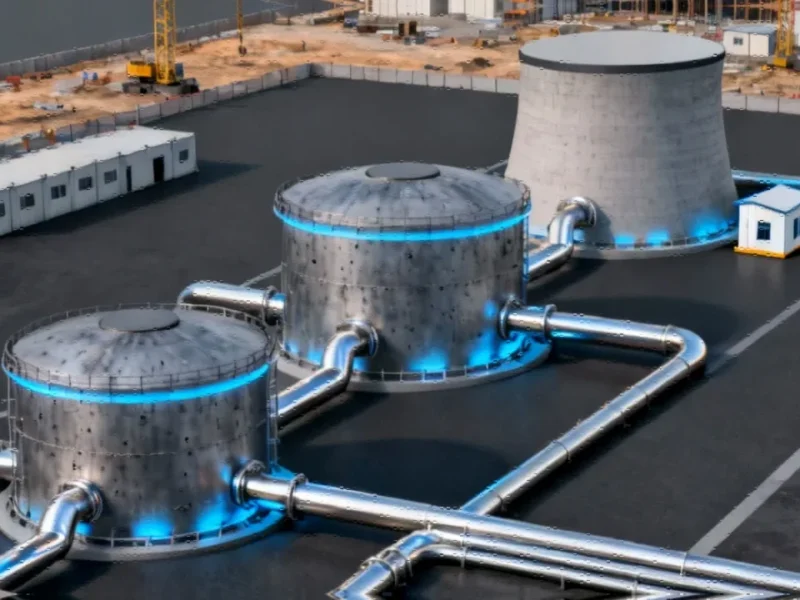The Perfect Storm Confronting Offshore Wind
The offshore wind industry, once riding a wave of unprecedented growth, now faces a complex convergence of economic pressures and political headwinds. What was previously considered a cornerstone of the global energy transition now confronts significant challenges that threaten to slow its expansion. From failed auctions in Europe to political opposition in the United States, the sector is undergoing a fundamental reassessment of its growth trajectory and economic viability.
Economic Realities Reshape Industry Dynamics
Rising interest rates and persistent supply chain constraints have dramatically altered the financial calculus for offshore wind projects. According to energy consultancy Wood Mackenzie, capital expenditure has climbed to approximately €3 million per megawatt, up significantly from €2.5 million just two years earlier. This cost inflation has rendered numerous projects economically unviable, leading to the cancellation of 24.1 gigawatts of offshore wind capacity and offtake agreements since 2023.
Sven Utermöhlen, head of offshore wind at German energy company RWE, summarizes the situation: “This has been predominately driven by rising costs, but also an overarching political climate where the fight against climate change and the drive for decarbonisation and energy transition has somewhat slowed down and has made space for other priorities.” The industry’s current struggles represent a stark reversal from the rapid growth experienced during the low-interest rate environment of the 2010s and early 2020s.
Political Support Wavers in Key Markets
The political landscape for offshore wind has become increasingly unpredictable, particularly in the United States where former President Donald Trump has actively sought to block developments and suspend permits. This political uncertainty compounds the economic headwinds facing developers, creating a challenging environment for long-term investment decisions.
In Britain, the world’s second-largest offshore wind market, political support has become increasingly fragile. The decision to raise maximum prices in upcoming contracts-for-difference auctions has drawn criticism from government opponents. The insurgent rightwing Reform party, currently leading in polls, has warned it could “strike down” these crucial support mechanisms if it gains power.
Contract Innovations Offer Potential Solutions
Despite these challenges, innovative approaches to project financing and risk allocation are emerging as potential pathways forward. Government-backed contracts-for-difference (CfDs), pioneered in the UK and now being adopted in Denmark and Germany, provide developers with guaranteed electricity prices while requiring them to pay back the difference if wholesale prices exceed agreed levels.
Søren Lassen, head of wind at Wood Mackenzie, emphasizes the importance of these mechanisms: “You’re really looking at the CFD as the option if you want to deliver renewables at the scale that the governments are still projecting.” This approach to industry developments represents a crucial evolution in how governments and developers share risks and costs.
Global Market Divergence and Regional Responses
The challenges facing offshore wind are not uniform across global markets. While development has stalled in some regions, others are pushing forward with ambitious plans. Vietnam is introducing CfD contracts as it tries to establish its offshore wind industry, part of a broader push across Asia that includes developments in the Philippines and South Korea.
This regional variation highlights how different markets are responding to the sector’s challenges. As noted in recent technology analyses across other sectors, adaptation and innovation often emerge from periods of market stress.
Manufacturing Capacity and Supply Chain Constraints
Leading turbine manufacturers, including Spain-based Siemens Gamesa and Denmark’s Vestas, continue to invest in new production capacity despite current market headwinds. However, analysts at TGS warn that a manufacturing shortfall remains likely unless Chinese manufacturers expand further into global markets.
This expansion faces potential obstacles from trade disputes and geopolitical concerns. Europe is investigating whether China’s wind turbine manufacturers receive unfair subsidies, while U.S. Energy Secretary Chris Wright has urged countries to reduce their dependence on Chinese technology. These developments in related innovations and manufacturing capabilities will significantly influence the industry’s future trajectory.
Pathways to Sustainable Growth
Industry leaders remain cautiously optimistic about the long-term prospects for offshore wind. Rasmus Errboe, CEO of Ørsted, who previously warned of the risk of a “downward spiral” in the industry, recently stated he remains “bullish” about its future. Similarly, Ben Backwell, CEO of the Global Wind Energy Council, expressed encouragement that “we have got over a lot of the humps we were facing.”
The current market correction may ultimately benefit the industry by weeding out unsustainable market mechanisms and undisciplined players. Jérôme Guillet, director at boutique advisory firm Snow, observes: “Bad auction designs are disappearing because there’s no optimism that would make people tolerate them. People that actually want to do offshore wind will do offshore wind now and it makes sense in some countries with the new stabilised current project economics.”
Balancing Realistic Expectations with Climate Imperatives
The International Energy Agency recently downgraded its growth outlook for offshore wind from 212GW to 140GW by 2030. While this represents a significant reduction in projected capacity, it would still more than double the growth rate of the previous five years. This adjusted trajectory reflects a more realistic assessment of the industry’s near-term potential while maintaining substantial expansion.
As RWE’s Utermöhlen notes, “The fundamentals are intact,” but the industry needs “to get to a sustainable growth path” where supply and demand are balanced. “That will mean the growth trajectory is less steep than it was envisaged but that would be sustainable.” This recalibration represents a maturation of the sector rather than its decline, reflecting the complex market trends affecting numerous technology-driven industries.
Conclusion: Navigating Toward Calmer Waters
The offshore wind industry stands at a critical juncture, balancing its essential role in the global energy transition against immediate economic and political challenges. The sector’s ability to adapt to higher costs, supply chain constraints, and political uncertainty will determine its contribution to climate goals in the coming decade. While growth may proceed at a more measured pace than previously projected, the fundamental drivers for offshore wind development remain strong, positioning the industry for sustainable expansion once current headwinds subside.
This article aggregates information from publicly available sources. All trademarks and copyrights belong to their respective owners.
Note: Featured image is for illustrative purposes only and does not represent any specific product, service, or entity mentioned in this article.



